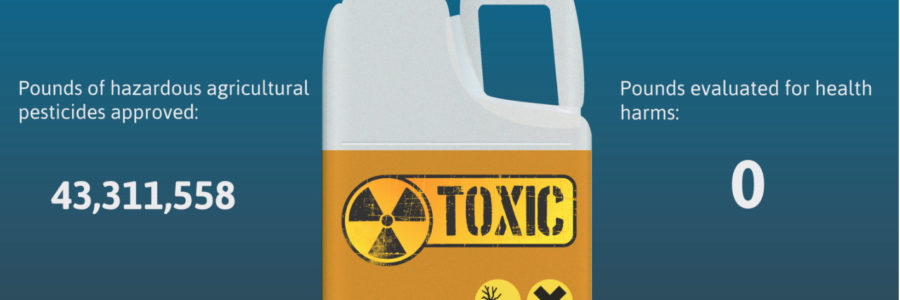Just under 200 million pounds of pesticides a year are used on California’s crops. When it comes to using them safely, 56 county agricultural officers are local communities final line of defense. But a new report produced at UCLA suggests that a lack of guidance for county agricultural offices in considering alternatives or cumulative impacts for toxic exposures, may be putting people at risk.’Many of these counties are really committed to doing good work. … But we can ask too much of them and I think they need additional resources coming from the state level to allow them to do good work at the local level.’Tim Malloy, UCLA law professor
“Many of these counties are really committed to doing good work in terms of oversight and inspection,” says Tim Malloy, a professor of law at UCLA and the report’s lead author. “But we can ask too much of them and I think they need additional resources coming from the state level to allow them to do good work at the local level.”
Even around densely populated, urbanized parts of California like the Bay Area, agricultural land abuts homes and schools. In Sonoma and Napa counties, on the Peninsula, and in Santa Cruz and Monterey, people who farm lands, who live near them, and who go to neighboring schools risk exposure to pesticides and fumigants.
California first established a regulatory scheme for pesticides in 1901, making the state a uniquely independent watchdog. When the state’s oversight of pesticides diverges from that of the federal government, as with chlorpyrifos — a neurotoxin used on pests to citrus and almond crops — it draws national attention. UCLA’s analysis used permitting for chlorpyrifos as a test case to analyze how ag officers consider alternatives.
What’s chlorpyrifos, and what do we know about its risks?
Chlorpyrifos is a neurotoxin, first produced by the Dow Chemical Company in 1965, that’s meant to disrupt the nervous system of insects by inhibiting production of an enzyme. Mounting evidence concludes that whether touched, tasted, or eaten, it’s dangerous to humans as well. Most often, people consume tiny, tiny amounts of it as residue on vegetables and fruit.
